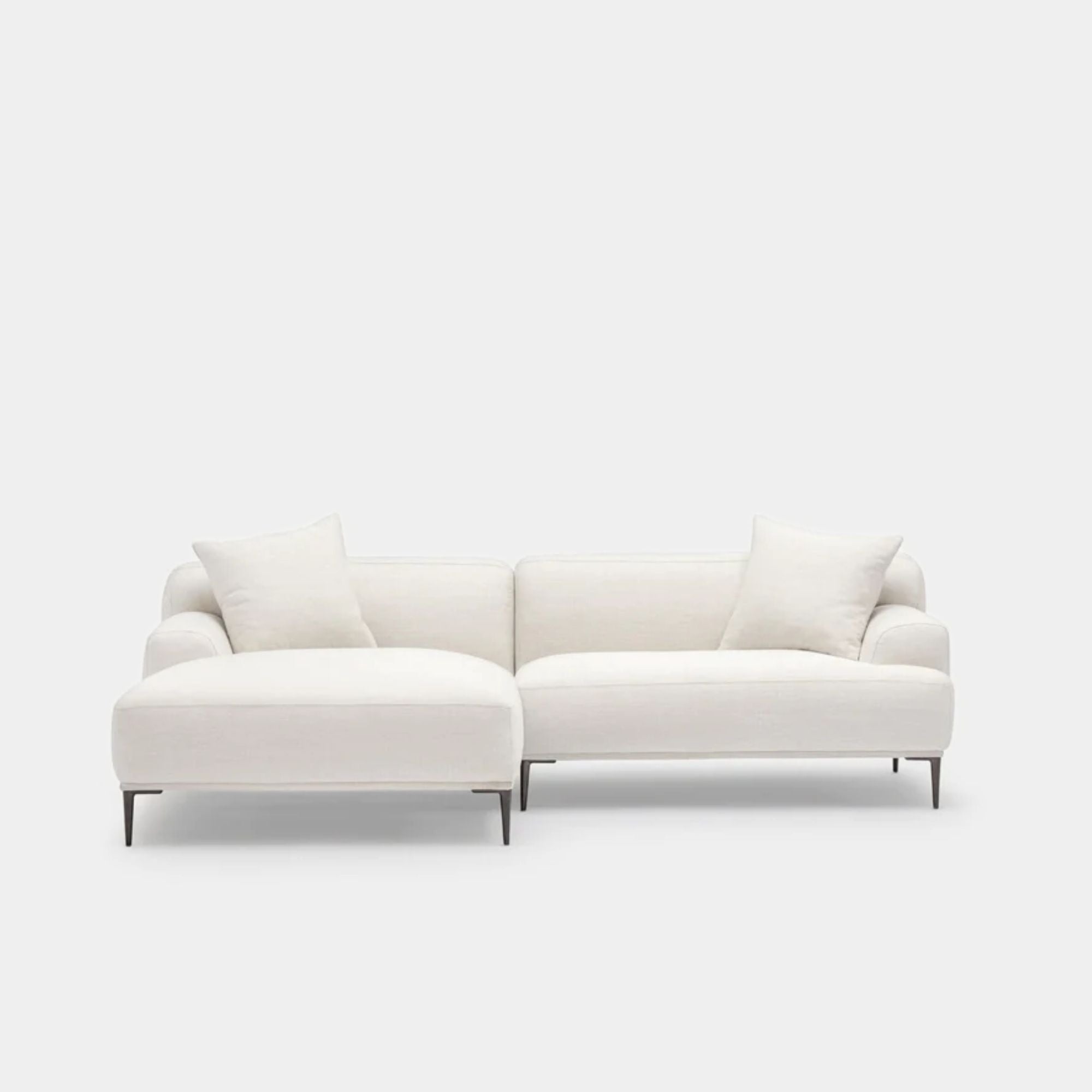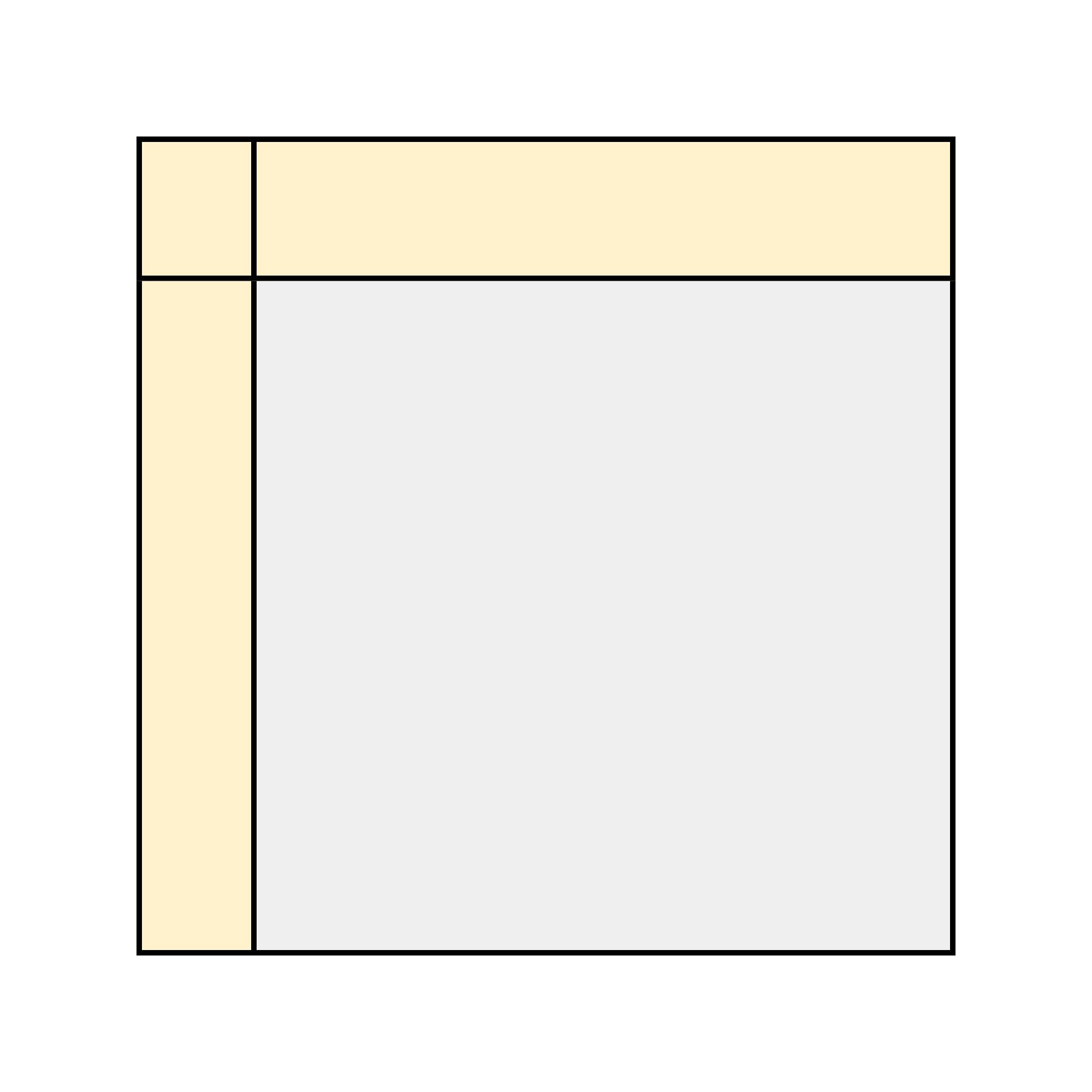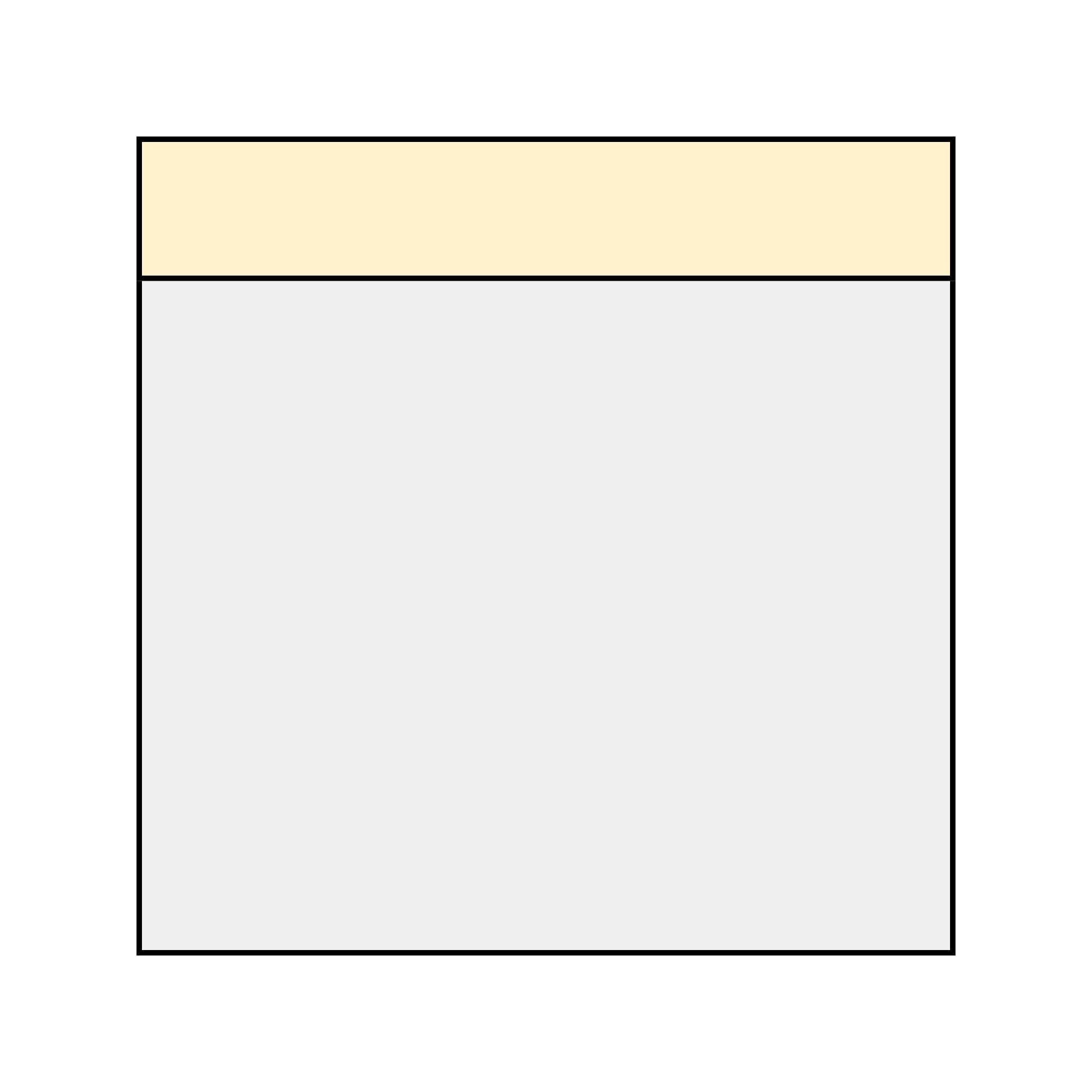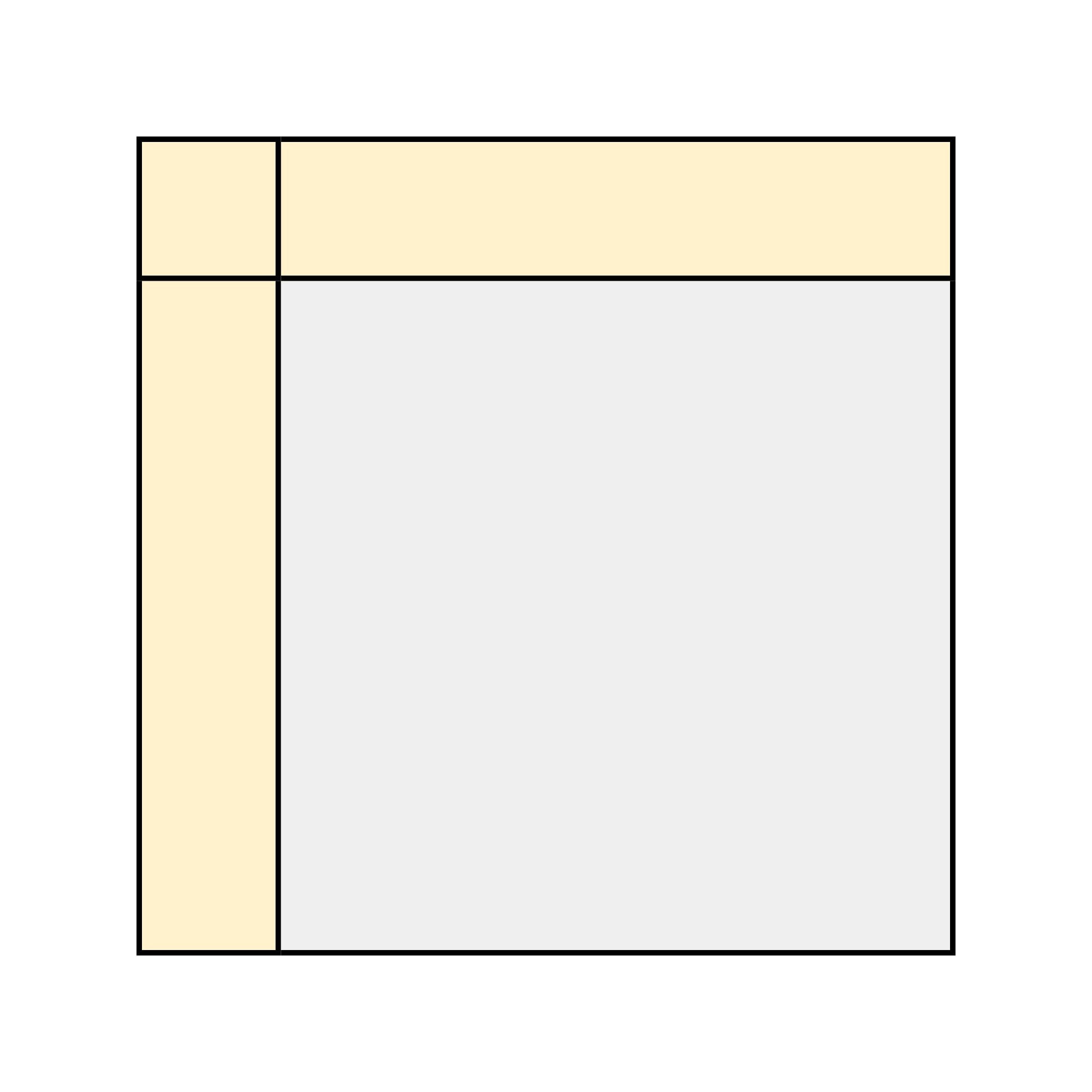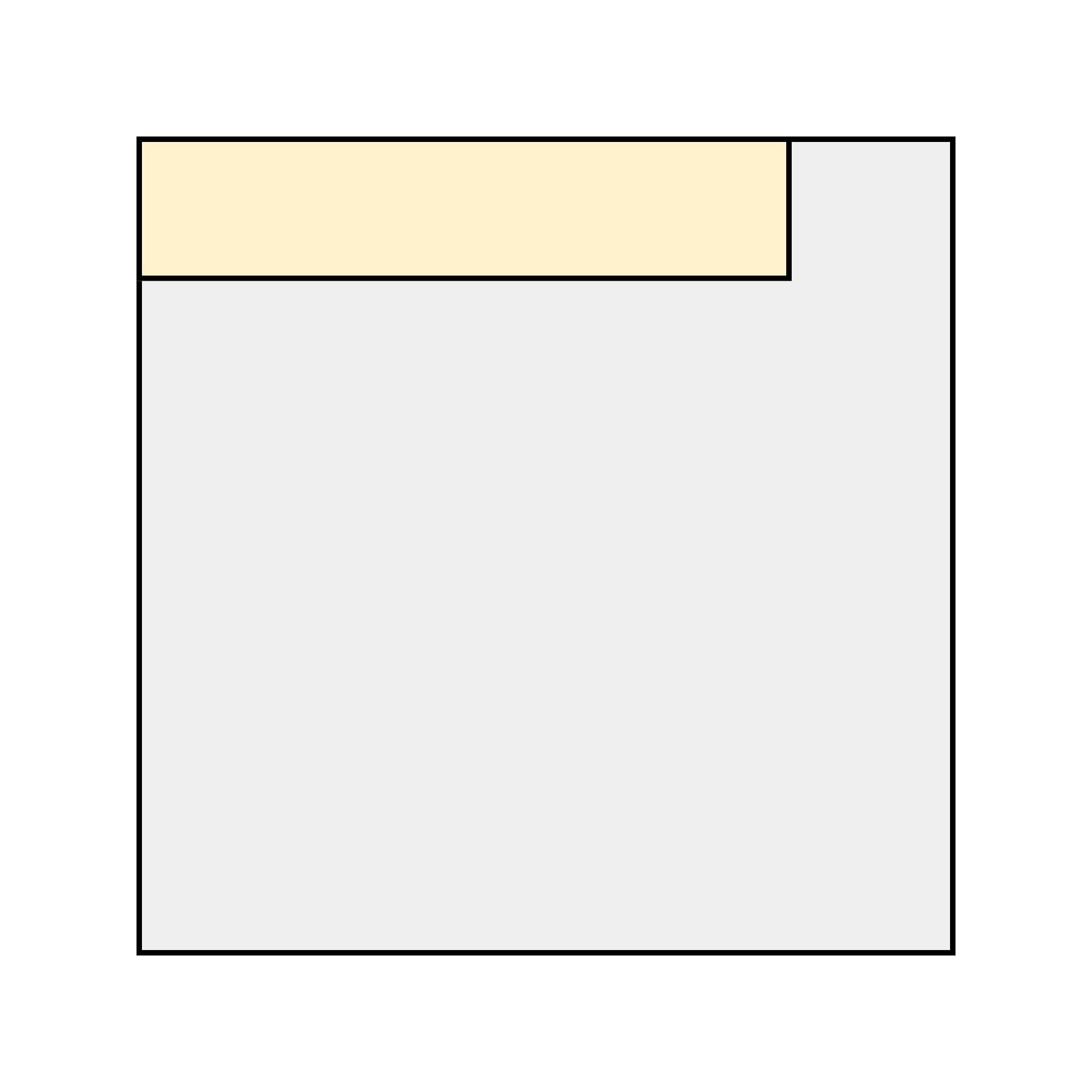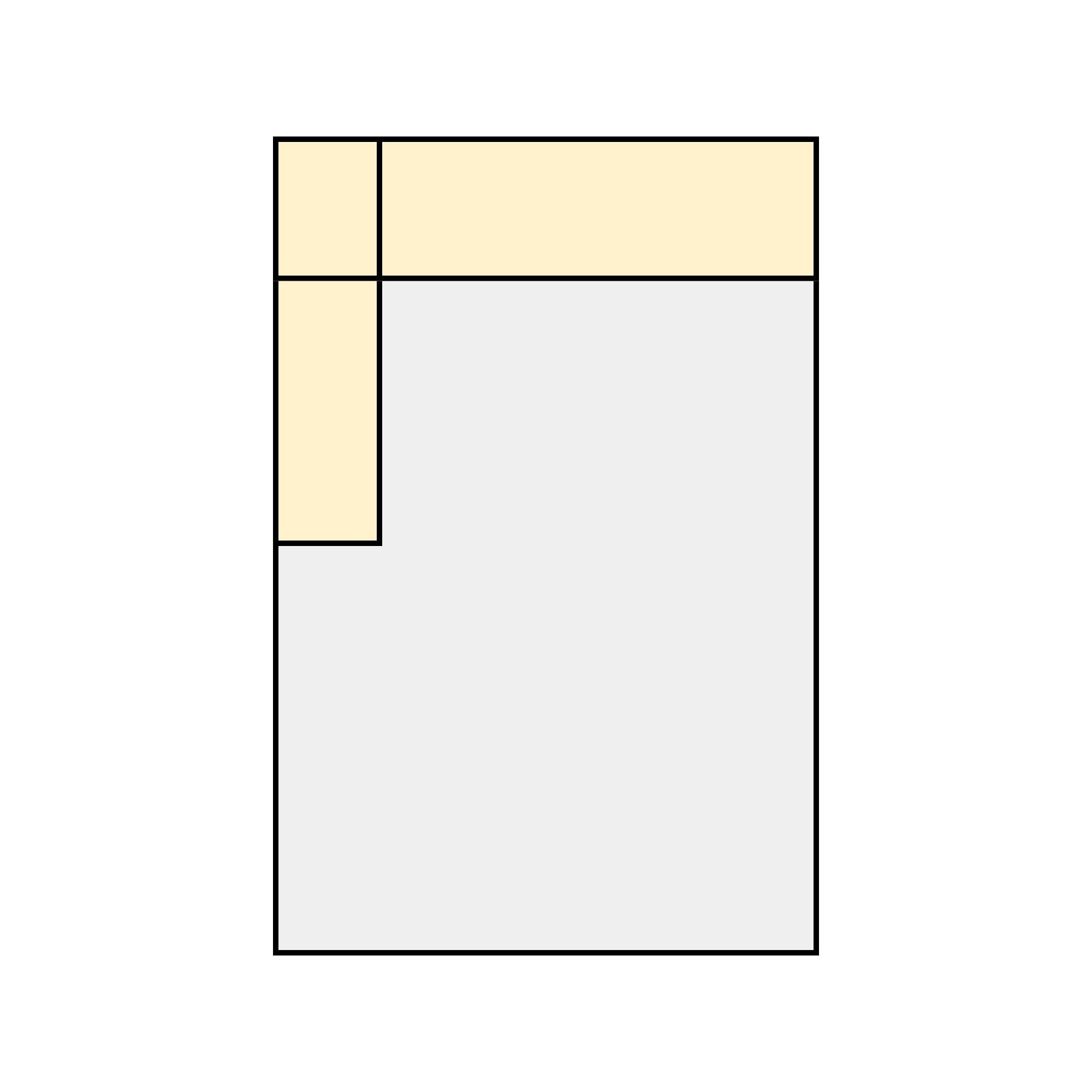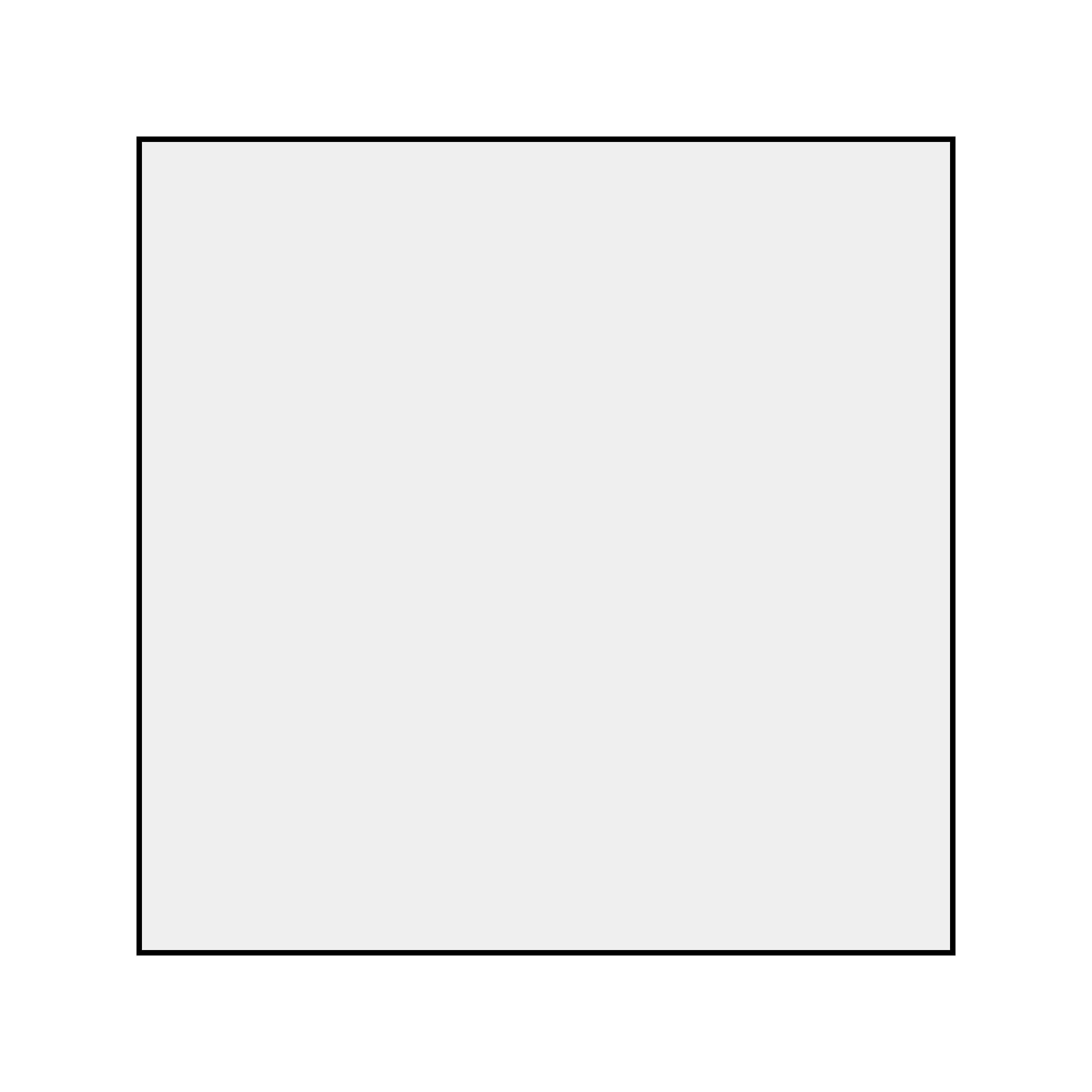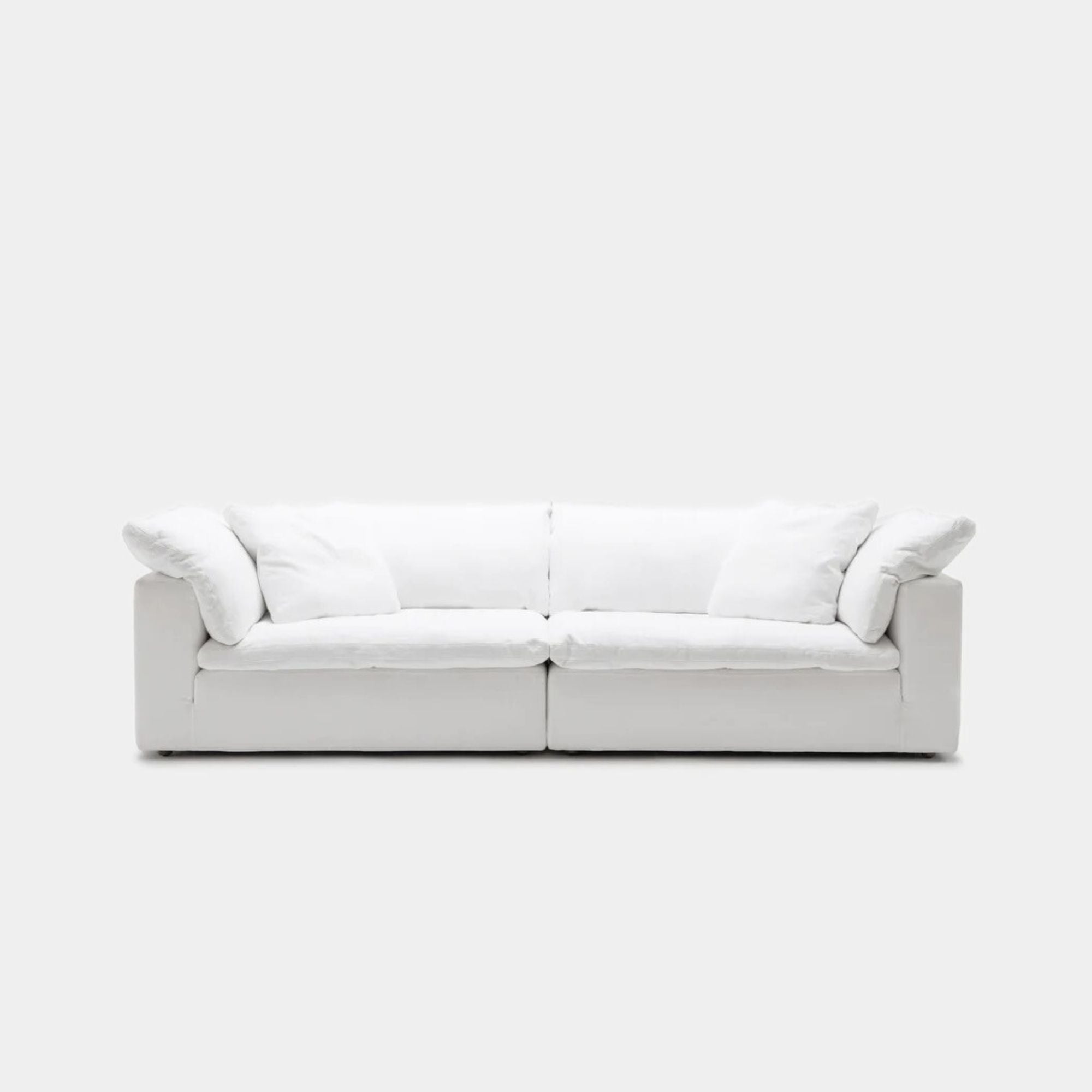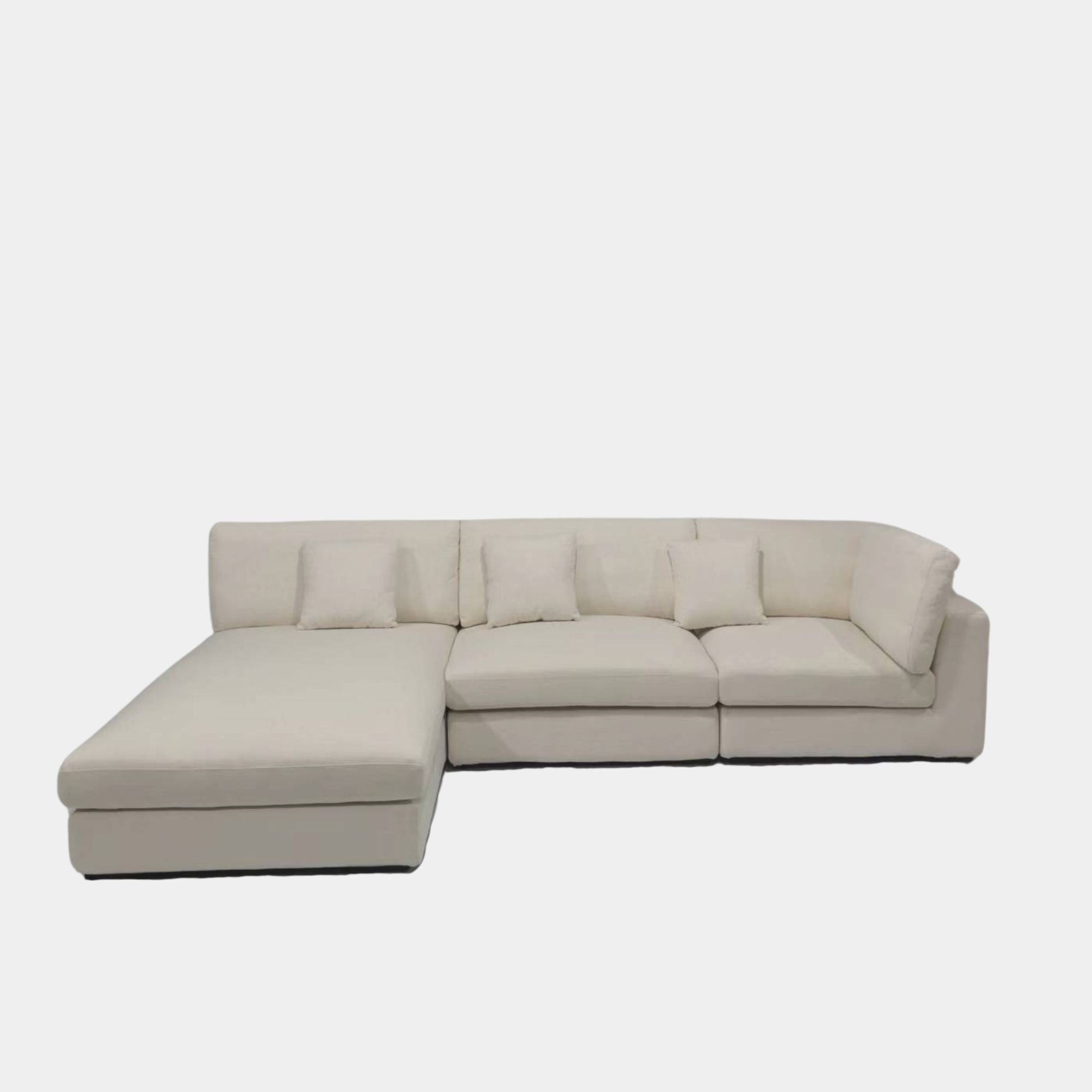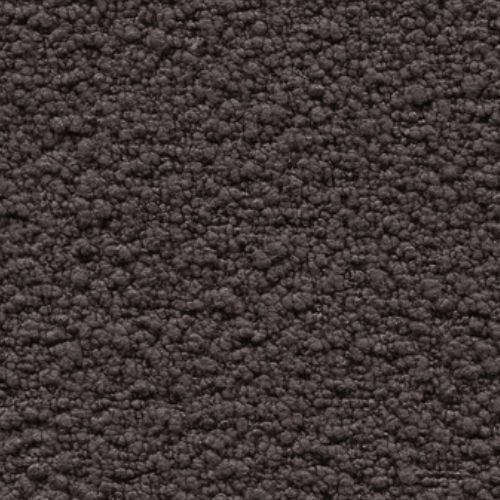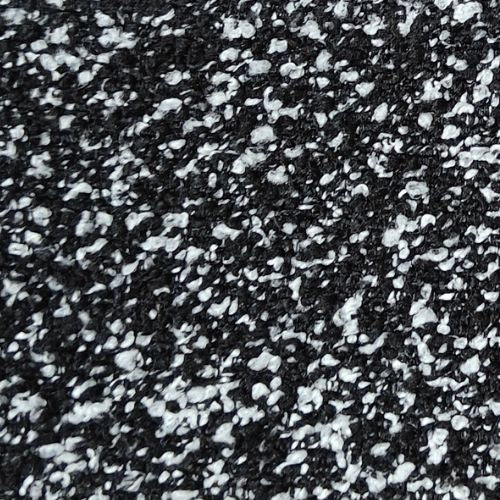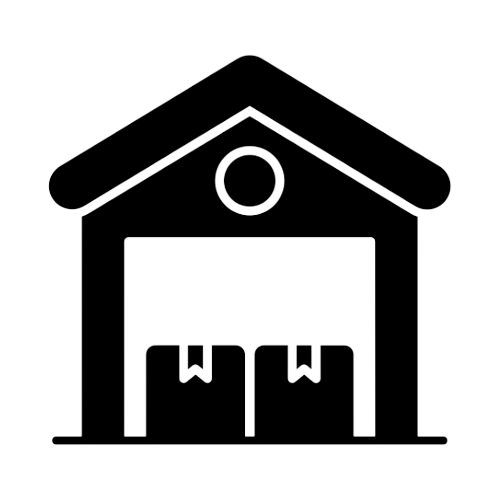Browse through some common questions that people may have. Reach out if still in doubt!
Guide
What is a modular sofa?
A modular sofa is a highly adaptable seating system composed of multiple individual sections, or "modules," that can be arranged in various configurations to suit different spaces and needs.
Unlike traditional sofas, modular sofas are designed for flexibility and customization, allowing you to expand, rearrange, or even separate the pieces over time.
Here’s what makes modular sofas unique:
- Flexible Arrangements: Modular sofas can be reconfigured easily. You can create anything from a small loveseat to a sprawling sectional, depending on the number and type of modules you choose.
- Tailored to Your Space: They work well in both large and small spaces, making them a popular choice for homes that may require future layout changes or reconfiguration.
- Versatile Styles: Modules often include various pieces like standard seats, chaise lounges, corner pieces, and ottomans, giving you options to create the layout that fits your style and seating needs.
A modular sofa is ideal for those who want a seating option that can evolve with their lifestyle, providing a stylish, adaptable solution for any living space.
What is considered a deep seat sofa and is it right for me?
A deep seat sofa typically has a seat depth of 56 cm or more from the front edge to the back cushion. This allows for a more relaxed, lounge-friendly seating position, as it gives ample room to sit back and stretch out your legs. Standard seat depths are usually between 45 to 56 cm, so anything beyond this is considered deep.
A deep seat sofa is great for those who prioritise comfort and want a sofa suitable for lounging. It works especially well for taller individuals who need more seat depth to sit comfortably. If you have a larger living area and like to relax or entertain guests, a deep seat sofa can be an excellent choice.
While deep seat sofas are great for comfort, they might not be ideal for smaller rooms, as they can take up more floor space. They may also feel too deep for shorter individuals, making it difficult to sit upright with feet touching the floor. Additionally, if you prefer more formal or upright seating, a deep seat sofa might not provide the support you’re looking for.
What are the common module types offered for modular sofas?
Modular sofas typically include a variety of unit types that you can combine to create the perfect layout for your space and seating needs. Here are the most common module types:
- End Unit: These pieces have one armrest on either the left or right side, serving as the sofa’s end. They can be combined with other modules to form the outer edges of your seating arrangement.
- Middle Unit: A versatile, armless section that fits seamlessly between other units to extend the length of the sofa. Middle units add extra seating without taking up much width, making them ideal for maximizing space.
- Peninsula Unit: This unit extends outward, offering an open-ended section perfect for lounging. Together with an end unit, it can be combined to form a one arm sofa.
- Chaise Unit: A long seat with no armrest on one side, perfect for stretching out and relaxing. Chaise units are popular for adding a comfortable lounging option to your modular sofa setup. Together with a peninsula unit or end unit, it can be combined to form a L shape sectional sofa.
- Ottoman Unit: A standalone, backless module that can serve as a footrest, additional seating, or even a coffee table. Ottomans offer added flexibility and can be easily moved around to suit different seating arrangements.
Each of these modules allows you to create a unique and customizable seating experience, whether you’re designing a compact 2-seater or a spacious sectional for a larger room.
How many people can sit on your modular sofa?
Our modular sofas are designed to adapt to any space and seating needs, offering flexible arrangements for different room sizes and gatherings:
- Small Living Rooms: Two pieces can be arranged as a cozy 2-seater, perfect for couples in smaller living rooms.
- 3-Seater Sectional: Add a chaise to a sofa module to create a comfortable 3-seater sectional, ideal for medium-sized spaces.
- Large Families and Gatherings: Combine multiple modules of various sizes to form expansive corner sofas or large sectionals, providing plenty of seating for family and friends.
What is the difference between a modular sofa and sectional sofa?
A sectional sofa is typically a pre-configured design, such as an L shape or U shape, with fixed connections between sections.
In contrast, a modular sofa consists of individual pieces or sections that can be rearranged to create different seating configurations, offering more flexibility and customization.
What is boucle fabric?
Boucle fabric is a type of textured material made from looped yarns, giving it a distinctive, soft, and nubby appearance. Its natural softness and tactile appeal make it ideal for creating cozy, inviting spaces.
Boucle has become popular in modern interior design, especially for upholstered furniture like sofas and armchairs. It is highly durabile, making it suitable for both decorative and functional pieces.
What sofa styles does boucle fabric work well with?
Boucle fabric complements several sofa styles beautifully, each showcasing its texture in unique ways:
- Curved Sofas: Boucle’s soft, looped texture enhances the cosy, inviting look of curved sofas. This design nods to 1940s mid-century furniture, like Eero Saarinen’s iconic “womb” chair, creating a warm and comfortable ambiance.
- Boxy Sofas: For a modern twist, boucle pairs well with boxy or straight-edged sofas. The fabric’s plush texture contrasts with the clean lines, adding visual depth and a contemporary feel to the space.
- Low-profile Sofas: Boucle fabric works well with low-profile sofas, lending a grounded yet luxurious vibe that aligns with minimalist and modern aesthetics.
Boucle fabric's tactile appeal and visual warmth make it a popular choice for sofa styles that aim to create a cosy, modern living space.
How to clean boucle fabric?
Cleaning boucle fabric is straightforward but requires gentle care to maintain its textured look and soft feel:
- Regular Vacuuming: Use a vacuum with an upholstery attachment to remove dust and debris from boucle fabric. This prevents dirt from settling into the loops, keeping the texture looking fresh.
- Spot Cleaning: For spills, gently blot the area with a clean, dry cloth. Avoid rubbing, as it can damage the loops. Use a mild upholstery cleaner if needed, following the product’s instructions carefully. Test in an inconspicuous area first to ensure it doesn’t affect the fabric colour.
- Avoid Excess Water: Boucle fabric is sensitive to moisture. If spot cleaning with water, use minimal amounts to prevent saturation, as too much moisture can weaken the fabric’s structure.
- Professional Cleaning: For deep cleaning, especially with stubborn stains, consider a professional upholstery cleaning service. This helps maintain the boucle's texture without risking damage from DIY methods.
With regular maintenance, boucle fabric will keep its distinctive, cosy look for years to come.
What is the benefit of choosing black and dark grey sofas?
Black and dark grey sofas offer a bold, timeless aesthetic. These colours are often associated with sophistication, elegance, and modernity.
Black evokes feelings of confidence and refinement, while dark grey adds a touch of subtlety and versatility.
Both can serve as statement pieces, anchoring a room's design whilst allowing other elements such as artwork, cushions, or rugs to take prominence.
What design styles work well with black and dark grey?
Black and dark grey sofas are highly versatile and complement various design styles, including:
- Modern and minimalist: Their sleek, clean appearance enhances minimalist interiors.
- Industrial: Both shades pair well with exposed metal, concrete, and dark wood often found in industrial-style spaces.
- Glamorous: Black and dark grey can be paired with metallic accents and luxurious materials such as velvet to create an opulent look.
- Contemporary: These deep hues provide striking contrast and work beautifully alongside bold geometric patterns or abstract artwork.
What cushions work well with black and dark grey sofas?
Neutral cushions in tones such as grey, white, or beige provide subtle contrast, softening the bold presence of black or dark grey.
For a splash of colour, jewel tones like emerald green, royal blue, or mustard yellow can add vibrancy.
Metallic tones such as gold and silver add a touch of luxury, while deep reds or burnt oranges provide warmth.
What rugs work well with black and dark grey sofas?
Neutral rugs in shades of beige, grey, or cream create balance with the darker tones of a black or dark grey sofa.
For a more dramatic effect, patterned rugs in black and white, or those featuring geometric designs, can enhance a modern aesthetic.
For a softer, cosier feel, plush rugs in muted tones or textured wool options provide warmth and contrast.
What wall colour work well with black and dark grey sofas?
Light or neutral wall colours such as off-white, light grey, or beige help to balance the darker tones and can make a room feel more spacious.
For a more dramatic effect, deep greens, rich blues, or even dark greys offer a sophisticated backdrop that pairs harmoniously with black or dark grey sofas.
